Obviously,
it would be too much to expect the Commerce Ministry
alone to tackle these issues. But since these are
among the most important constraints on India's exports
currently, it was to be expected that the Commerce
Minister would take note of these and at least try
to co-ordinate with other Ministries such as Power
and Surface Transport in order to ensure some cohesive
policy with respect to these problems. (Instead, the
only co-ordination seems to have been with the Ministry
of Finance, and that too, only because the strategy
conforms to the Finance Ministry's known approach
of preferring tax giveaways to increased public productive
expenditure.)
Sustained
export expansion requires a more comprehensive and
systematic macro strategy on the part of the government,
which includes a substantial increase in public infrastructure
spending. Such a strategy would also end up improving
conditions for producers for the domestic market as
well, and therefore aggregate employment conditions.
Indeed, such a systematic and strategic policy would
be necessary if the export basket is to be diversified
towards more exports that have the potential for greater
dynamism in world markets. Over the past decade, the
commodity composition of exports
(chart 6a & 6b)
suggests that this has not occurred so far. But to
build a market for Indian products in the world markets
requires more than just reliance on private entrepreneurship,
as the experience of all successful exporting countries
amply demonstrates. It requires systematic government
involvement in a variety of forms.
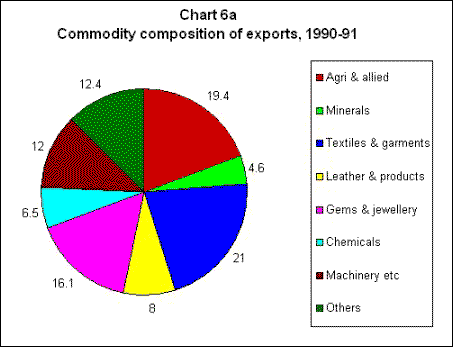
Chart
6a >> Click
to Enlarge
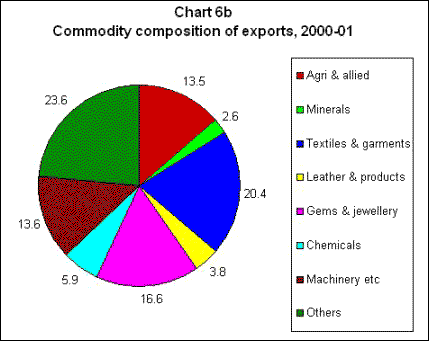
Chart
6b >> Click
to Enlarge
Sadly,
the Exim Policy does not appear to have recognised
this at all. Instead, it sticks within the now familiar
and largely discredited "liberalisation"
paradigm, in which it is assumed that deregulation
and tax sops will be sufficient to make private producers
not only increase production but also improve productivity.
This is why the projections of export growth in the
so-called "thrust sectors" indicated in
Chart 7, are mostly close to past patterns The big
increase that is expected is on agricultural exports,
following upon anticipated private response to the
liberalising measures outlined below.
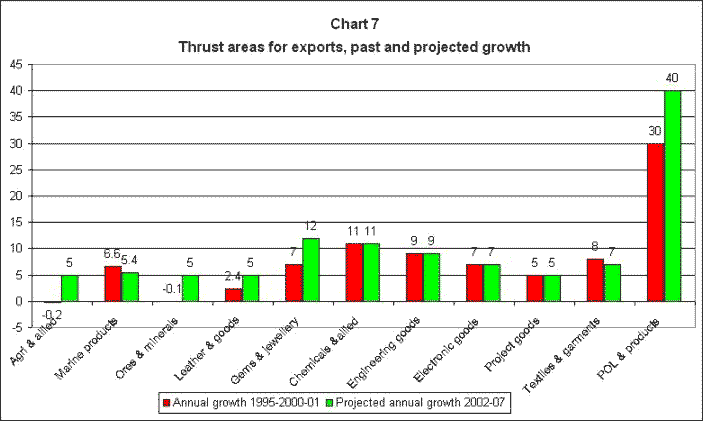
Chart
7 >> Click
to Enlarge
The trend in India's share of exports
(chart 8)
in some of these crucial areas is not cause for much
optimism. While India's share of world trade in rice
and spices has grown, in several other sectors India's
share has fallen, sometimes quite sharply.
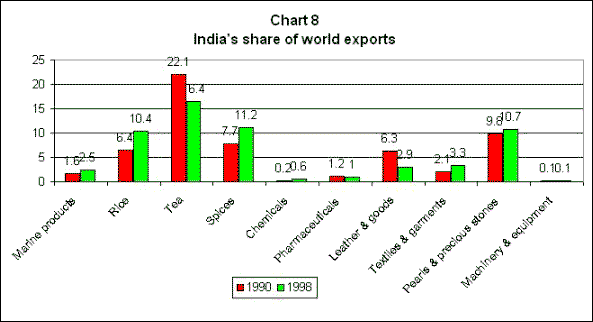
Chart
8 >> Click
to Enlarge
In
fact, the only evidence of some strategic orientation
in the current Exim Policy is the launch of the new
"Focus Africa" programme, which is certainly
welcome. The past direction of trade (indicated in
Charts 9a
and 9b)
suggests that African markets have been greatly neglected
by Indian exporters, which is a mistake because Africa
(contrary to general perception) has been one of the
faster growing regions of the world in the past decade
!
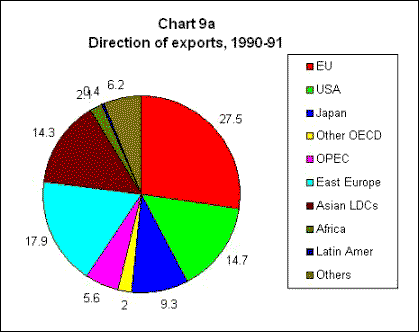
Chart
9a >> Click
to Enlarge
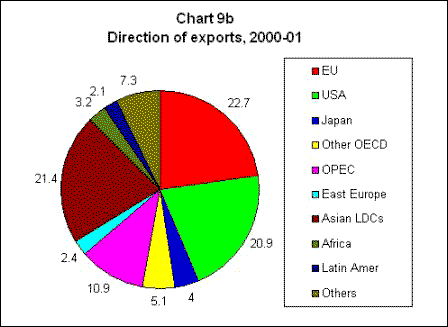
Chart
9b >> Click
to Enlarge
Consistent with the basic market-determined economic
strategy framework of this government, the main focus
of the new Exim Policy exercise is on a range of measures
that will further liberalise the export trade, especially
with respect to agricultural exports, and on providing
some fiscal incentives including duty neutralisation
and other tax sops to exporters. It also relies on
more Special Economic Zones, provided with even more
incentives, to take up the task of export promotion,
even though the experience with Export Processing
Zones so far has been dismal.

